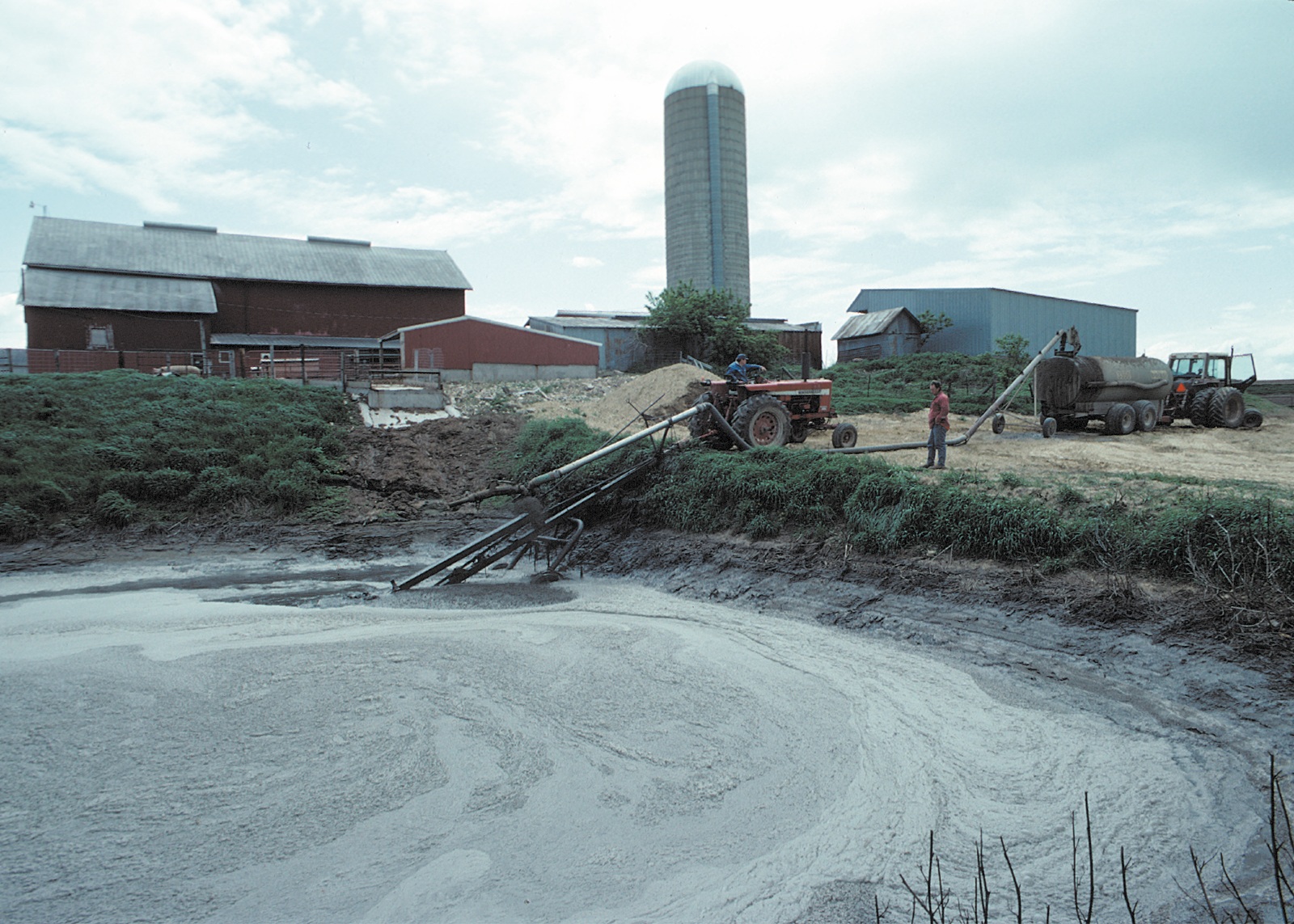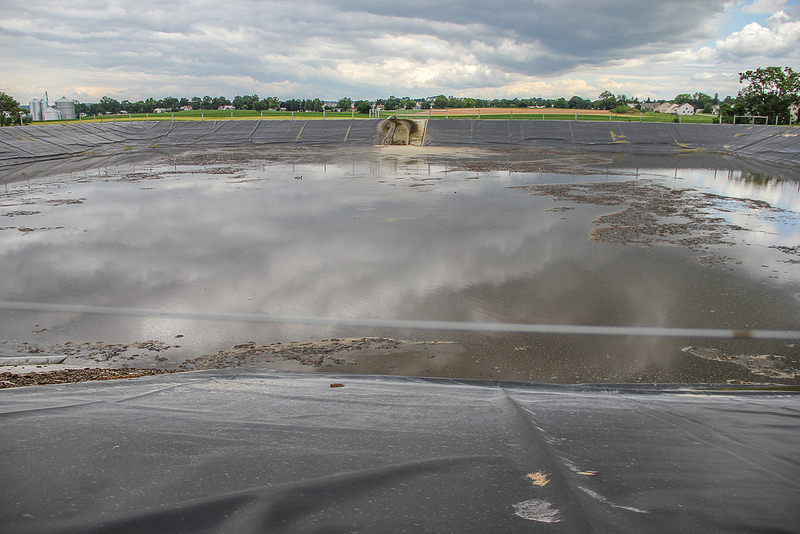-
Download:
My Results |
All BMPs
Leaf Color Chart (Real Time Nutrient Management)
 Leaf Color Chart (LCC) for Fertilizer N Management in Rice. Photo courtesy of Bangladesh Rice Knowledge Bank/IRRI.
Leaf Color Chart (LCC) for Fertilizer N Management in Rice. Photo courtesy of Bangladesh Rice Knowledge Bank/IRRI.
Practice Type: Management
Landuse/Agriculture Type: Rice
Climatic Zones: Tropical
Regions: South Asia
Pollutants Treated: Nitrogen
Description: The Leaf Color Chart (LCC) is a simple and inexpensive tool that relates the color of rice leaves to critical nitrogen content and allows for real time nitrogen management. LCC-based real time nitrogen management can be practiced in rice production by monitoring leaf color in 7 to 10 day intervals during the growing season. Fertilizer N is applied wherever the leaves are less greenish than the threshold LCC value, which corresponds to critical leaf N content. LCC-based real time N management maintains optimal yields and results in higher N-use efficiency and less N applied as compared to using blanket N application recommendations. 1
Implementation Considerations: The LCC was originally developed for rice production, but has also been adapted to maize and wheat production. It is an extremely low-cost and accessible test for measuring nitrogen deficiencies in real time.
Scalable to small farms? Yes
1 T.K. Srivastava, A.K. Singh and V. Visha Kumari. Indian Journal of Fertilizers., (2013). Fertiliser Best Management Practices in Sugarcane. Volume 9 (4), pp. 96-108
Liquid Manure Handling Systems
 Liquid manure storage pit from a dairy operation in northeast Iowa. Photographer: Lynn Betts. Photo courtesy of USDA NRCS.
Liquid manure storage pit from a dairy operation in northeast Iowa. Photographer: Lynn Betts. Photo courtesy of USDA NRCS.
Practice Type: Structural
Landuse/Agriculture Type: Animal Confinement
Climatic Zones: Temperate, Semiarid, Tropical
Regions: North America, South Asia, Europe
Pollutants Treated: Nitrogen, Phosphorus, Sediment
Description: A liquid manure handling system is a planned system for collecting, transporting, storing, and disposing of liquid manure and contaminated runoff in a manner which does not degrade the surrounding environment. Necessary components include debris basins, dikes, diversions, fencing, grassed waterways, spray irrigation systems, pond sealing or lining, subsurface drains, surface drains, waste storage ponds, waste storage structures, and waste treatment lagoons. 1
Implementation Considerations: To minimize the effects of storage facilities on nearby water bodies, animal waste management systems should not be located in flood plains.
Scalable to small farms? No
1 "Best Management Practices, Today's Agriculture: A Responsible Legacy." Nutrient Best Management Practices. Web. Aug. 2013. http://dda.delaware.gov/nutrients/D17762BestMgmtbklt.pdf .
Liquid Manure Lagoons and Tank Systems
Category: Manure Management
Practice Type: Structural
Landuse/Agriculture Type: Animal Confinement
Climatic Zones: Temperate, Semiarid, Tropical
Regions: North America, South Asia, Europe
Pollutants Treated: Nitrogen, Phosphorus, Sediment
Description: A lagoon is a waste treatment impoundment made by construction of an embankment and/or excavating a pit or dugout for the purpose of storing liquid manure. An impermeable liner is an essential component of a lagoon. It can either be aerobic or anaerobic in process. A tank is an impervious storage structure for liquid manure and wastewater. Properly collecting and storing the manure allows the producer to determine the appropriate time for land application, preventing nutrient runoff and leaching.1
Implementation Considerations: To minimize the effects of storage facilities on nearby water bodies, animal waste management systems should not be located in flood plains.
Scalable to small farms? No
1 "Best Management Practices, Today's Agriculture: A Responsible Legacy." Nutrient Best Management Practices. Web. Aug. 2013. http://dda.delaware.gov/nutrients/D17762BestMgmtbklt.pdf .
Practice Type: Structural
Landuse/Agriculture Type: Animal Confinement
Climatic Zones: Temperate, Semiarid, Tropical
Regions: North America, South Asia, Europe
Pollutants Treated: Nitrogen, Phosphorus, Sediment
Description: A lagoon is a waste treatment impoundment made by construction of an embankment and/or excavating a pit or dugout for the purpose of storing liquid manure. An impermeable liner is an essential component of a lagoon. It can either be aerobic or anaerobic in process. A tank is an impervious storage structure for liquid manure and wastewater. Properly collecting and storing the manure allows the producer to determine the appropriate time for land application, preventing nutrient runoff and leaching.1
Implementation Considerations: To minimize the effects of storage facilities on nearby water bodies, animal waste management systems should not be located in flood plains.
Scalable to small farms? No
1 "Best Management Practices, Today's Agriculture: A Responsible Legacy." Nutrient Best Management Practices. Web. Aug. 2013. http://dda.delaware.gov/nutrients/D17762BestMgmtbklt.pdf .
Livestock Mortality Composting
Category: Nutrient Recylcing
Practice Type: Management
Landuse/Agriculture Type: Animal Confinement
Climatic Zones: Temperate, Semiarid, Tropical
Regions: North America, Europe
Pollutants Treated: Nitrogen, Phosphorus, Sediment
N Efficiency1: 40%
P Efficiency1: 10%
Description: Proper disposal of dead animals is important for public health, herd and flock health and nutrient management. Composting of dead animals is an alternative to other methods of disposal such as burning, incineration, burial and landfilling. Composted material can be combined with poultry/livestock/swine litter and land applied, reducing need for additional fertilizers.2
Implementation Considerations: Composting is an inexpensive alternative to disposing of dead animals. It is especially practical for large animals that cannot easily be incinerated. However, in the U.S. careful consideration must be given for goats and sheep due to the prevalence of scrapie, a prion disease, in flocks across the U.S. Using the compost from diseased animals on crops could create a bio-security threat.
Scalable to small farms? Yes
1 "Documentation: Source Data, BMP Effectiveness Values." Chesapeake Assessment Scenario Tool. Web. 2013. http://casttool.org/Documentation.aspx .
2 Estimates of County-level Nitrogen and Phosphorus Data for Use in Modeling Pollutant Reduction Documentation for Scenario Builder Version 2.2." Chesapeake Bay. Dec. 2010. Web. May 2013. http://archive.chesapeakebay.net/pubs/SB_V22_Final_12_31_2010.pdf.
Practice Type: Management
Landuse/Agriculture Type: Animal Confinement
Climatic Zones: Temperate, Semiarid, Tropical
Regions: North America, Europe
Pollutants Treated: Nitrogen, Phosphorus, Sediment
N Efficiency1: 40%
P Efficiency1: 10%
Description: Proper disposal of dead animals is important for public health, herd and flock health and nutrient management. Composting of dead animals is an alternative to other methods of disposal such as burning, incineration, burial and landfilling. Composted material can be combined with poultry/livestock/swine litter and land applied, reducing need for additional fertilizers.2
Implementation Considerations: Composting is an inexpensive alternative to disposing of dead animals. It is especially practical for large animals that cannot easily be incinerated. However, in the U.S. careful consideration must be given for goats and sheep due to the prevalence of scrapie, a prion disease, in flocks across the U.S. Using the compost from diseased animals on crops could create a bio-security threat.
Scalable to small farms? Yes
1 "Documentation: Source Data, BMP Effectiveness Values." Chesapeake Assessment Scenario Tool. Web. 2013. http://casttool.org/Documentation.aspx .
2 Estimates of County-level Nitrogen and Phosphorus Data for Use in Modeling Pollutant Reduction Documentation for Scenario Builder Version 2.2." Chesapeake Bay. Dec. 2010. Web. May 2013. http://archive.chesapeakebay.net/pubs/SB_V22_Final_12_31_2010.pdf.
Loafing Lot Management
Category: Manure Management, Erosion Control
Practice Type: Structural, Management
Landuse/Agriculture Type: Animal Confinement
Climatic Zones: Temperate, Semiarid, Tropical
Regions: North America, South Asia, Europe
Pollutants Treated: Nitrogen, Phosphorus, Sediment
N Efficiency1: 20%
P Efficiency1: 20%
S Efficiency1: 40%
Description: Loafing lot management systems prevent areas exposed to heavy livestock traffic from experiencing excessive manure and soil losses due to the destruction of ground cover. Loafing lots that are used for herd exercise and loafing are usually denuded of vegetation and harbor undesirable plants. In a loafing lot management system, the area is divided into lots. The cattle are rotated from lot to lot as is necessary to maintain a vegetative cover. One lot is designated as a heavy use area (or sacrifice lot) where animals are fed and sheltered. The intent of this practice is to prevent manure and sediment runoff from entering watercourses and sensitive areas to capture a portion of the manure as a resource for other uses such as crop fertilizer.2
Implementation Considerations: A minimum of three grassed loafing paddocks are recommended. Any adjacent streams should be fenced out. The sacrifice area should be scraped periodically and have clean water diversions and filter strips in place.
Scalable to small farms? Yes
1 "Documentation: Source Data, BMP Effectiveness Values." Chesapeake Assessment Scenario Tool. Web. 2013. http://casttool.org/Documentation.aspx .
2 Estimates of County-level Nitrogen and Phosphorus Data for Use in Modeling Pollutant Reduction Documentation for Scenario Builder Version 2.2." Chesapeake Bay. Dec. 2010. Web. May 2013. http://archive.chesapeakebay.net/pubs/SB_V22_Final_12_31_2010.pdf.
Practice Type: Structural, Management
Landuse/Agriculture Type: Animal Confinement
Climatic Zones: Temperate, Semiarid, Tropical
Regions: North America, South Asia, Europe
Pollutants Treated: Nitrogen, Phosphorus, Sediment
N Efficiency1: 20%
P Efficiency1: 20%
S Efficiency1: 40%
Description: Loafing lot management systems prevent areas exposed to heavy livestock traffic from experiencing excessive manure and soil losses due to the destruction of ground cover. Loafing lots that are used for herd exercise and loafing are usually denuded of vegetation and harbor undesirable plants. In a loafing lot management system, the area is divided into lots. The cattle are rotated from lot to lot as is necessary to maintain a vegetative cover. One lot is designated as a heavy use area (or sacrifice lot) where animals are fed and sheltered. The intent of this practice is to prevent manure and sediment runoff from entering watercourses and sensitive areas to capture a portion of the manure as a resource for other uses such as crop fertilizer.2
Implementation Considerations: A minimum of three grassed loafing paddocks are recommended. Any adjacent streams should be fenced out. The sacrifice area should be scraped periodically and have clean water diversions and filter strips in place.
Scalable to small farms? Yes
1 "Documentation: Source Data, BMP Effectiveness Values." Chesapeake Assessment Scenario Tool. Web. 2013. http://casttool.org/Documentation.aspx .
2 Estimates of County-level Nitrogen and Phosphorus Data for Use in Modeling Pollutant Reduction Documentation for Scenario Builder Version 2.2." Chesapeake Bay. Dec. 2010. Web. May 2013. http://archive.chesapeakebay.net/pubs/SB_V22_Final_12_31_2010.pdf.


